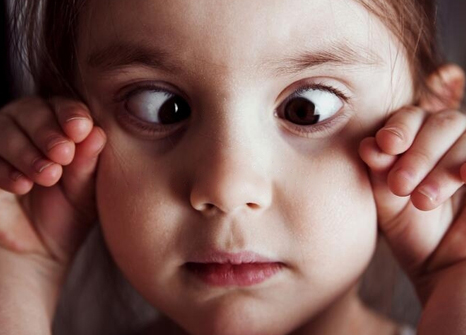Child Eye Care
Children's Eye Check-up
Among the various child health issues that parents are most concerned with eyes and vision rank near the top. Good vision is essential for proper physical development and educational progress in children
Ever wondered what your baby can see when you play with him or her?
- At Birth – Babies see in black and white and shades of grey. They can focus only 8 to 12 inches and most of their vision is blurred.
- 1 – 2 months – start to follow objects by moving head, prefers objects with sharp contrast like checkered patterns.
- 2 to 4 months – Eyes which were wandering start to see in tandem, start appreciating colors.
- 4 to 6 months – Learn to fuse images from both eyes resulting in better depth perception, learn hand-eye coordination, able to locate and hold objects. Vision is near 20/20 now.
- 6 to 12 months – learn more fine coordination, spatial arrangement, tracking of fine moving objects.

- Toddlers and preschoolers – The higher centers in brain keep maturing and evolving. Brain learns to fuse two images to get Binocular single vision and depth of focus till 7 to 9 years of age.
- ‘Child Eyecare’ is a joint responsibility of Pediatrician, Family Physician, Ophthalmologist and Parents together. Any child having serious vision problems should be attended immediately by an Ophthalmologist. Parents should pay attention to the child’s eyes and behavior. They should also take it seriously if the child is complaining of visual problems consistently.
At birth the Pediatrician screens for :
- White reflex in pupil, discharge
- Watering from one Eye
- Droopy eyes
- Crossed eyes
- An ophthalmologist should be asked to examine high risk infants i.e. those at risk of developing retinopathy of prematurity (ROP), family history of glaucoma, childhood Cataracts, retinal dystrophies, systemic disease associated with eye problems and children with neurological problems.
Additional eye exam at 3 years and just before they enter first grade – at about age 5 or 6.
